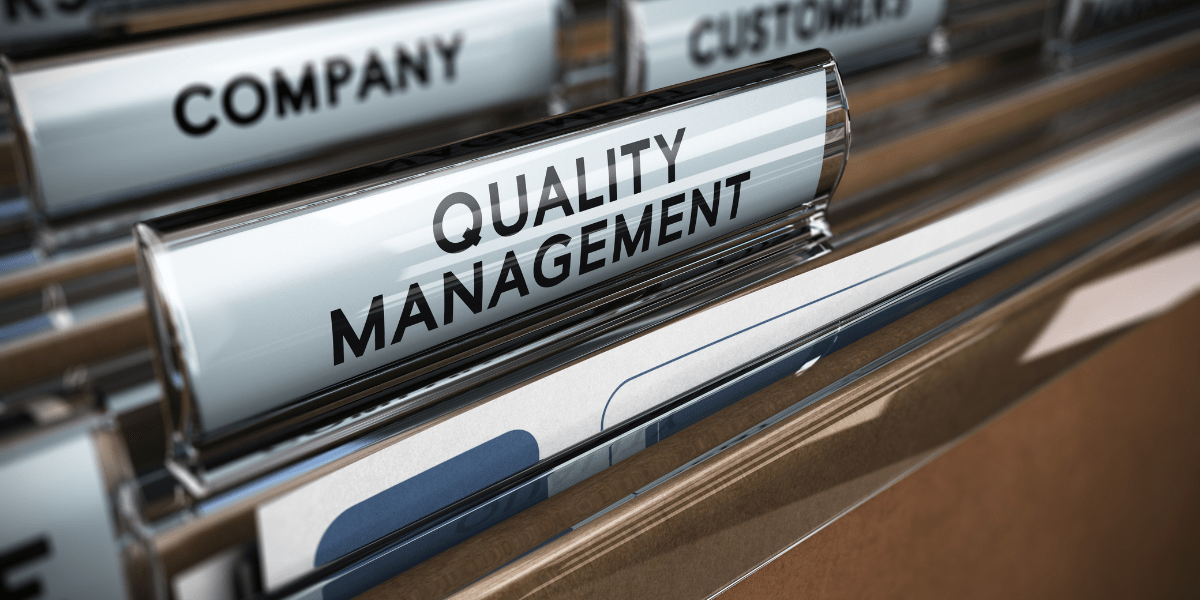
It is critical for adventure parks to ensure the safety and enjoyment of their visitors. Adventure parks can improve their visitors’ experiences while also benefiting in many areas of their operations by implementing a Safety and Quality Management System (SQMS). A SQMS can demonstrate a commitment to safety and quality, whether through regular equipment inspections, staff training, or having a comprehensive emergency response plan in place, and ultimately lead to increased customer satisfaction and profitability. With the growing popularity of high-flying and difficult activities, adventure parks must prioritize safety and quality measures to ensure that visitors have a safe and memorable experience.
Adventure parks provide thrilling experiences that draw visitors from all walks of life. Adventure parks have something for everyone, from ropes courses, zip lines, and obstacle courses to outdoor recreational activities. However, as with any other form of entertainment, safety and quality must come first. Implementing a safety and quality management system in an adventure park is a critical step in ensuring that visitors have a safe and enjoyable experience, while also benefiting from increased customer satisfaction and profitability.
Why is Quality and Safety Management Important?
If safety and quality measures are not in place, adventure parks can be dangerous places. With high-flying activities like ropes courses and zip lines, as well as challenging obstacle courses, it is critical to ensure that all equipment and activities meet industry standards. Furthermore, adventure parks must be staffed with qualified and trained employees who understand the industry’s importance of safety and quality.
Putting in place a Quality and Safety Management System
The first step in putting in place a safety and quality management system is to assess the park’s current state. This includes a thorough examination of all activities, equipment, and staff training. The following step will be to create a comprehensive safety and quality plan outlining the steps the park will take to ensure the safety and quality of its activities and equipment.
The following elements should be included in the safety and quality plan:
- Equipment inspections and maintenance: It is critical to conduct regular equipment inspections and maintenance to ensure that all equipment is in good working order and meets industry standards. This includes visitors’ use of ropes, harnesses, ziplines, and other equipment.
- Staff training: Employees should receive regular training on safety procedures, emergency response, and equipment handling.
- Standard operating procedures (SOPs): SOPs provide a clear and concise guide for staff on how to handle various aspects of the park, from equipment setup to emergency response.
- Emergency response plan: Adventure parks should have a plan in place that outlines procedures for dealing with various emergencies, such as accidents, injuries, and weather events.
- Risk assessments: Risk assessments assist in identifying potential hazards and determining the steps necessary to mitigate them. This includes an examination of the park’s layout, equipment, and activities.
- Record keeping: It is critical to keep accurate records of equipment inspections, staff training, and emergency response procedures in order to demonstrate compliance with safety and quality standards.
Inspections
Inspections are a critical component of an adventure park’s safety and quality management system. These inspections are designed to detect potential hazards, problems with park equipment and infrastructure, and overall operational efficiencies. They also help to ensure the safety of park employees and customers, as well as the park’s compliance with industry standards and regulations.
Visual inspections, equipment tests, and process evaluations are all examples of inspections. Visual inspections typically involve a walk-through of the park by a park staff member to identify any obvious safety or quality issues, such as broken equipment or uneven surfaces. Checking equipment such as ropes and harnesses for signs of wear and tear and ensuring that they meet safety standards is part of the equipment testing process. Process evaluations examine how the park operates, such as staffing levels, visitor flow, and emergency response procedures.
Regular inspections are required for an adventure park’s safety and quality management system to function properly. They enable park personnel to identify potential safety and quality issues before they become major issues, and to take corrective actions to mitigate risks. In addition, inspections provide valuable feedback on the park’s performance, which can be used to continuously improve processes and operations.
In addition to regular inspections, it is critical to conduct internal audits on a regular basis to assess the effectiveness of the safety and quality management system. To provide objective feedback on the park’s performance, these audits should be conducted by an independent party, such as a consultant or outside auditor. The findings of these audits can be used to identify areas for improvement, update safety and quality policies, and ensure that the park adheres to industry standards and regulations.
Finally, inspections are critical components of an adventure park’s safety and quality management system. Regular inspections aid in the identification and mitigation of potential safety and quality issues, and periodic internal audits provide objective feedback to help improve park operations. Adventure parks can ensure the safety of their employees and visitors by implementing a comprehensive inspection program and operating at the highest levels of safety and quality.
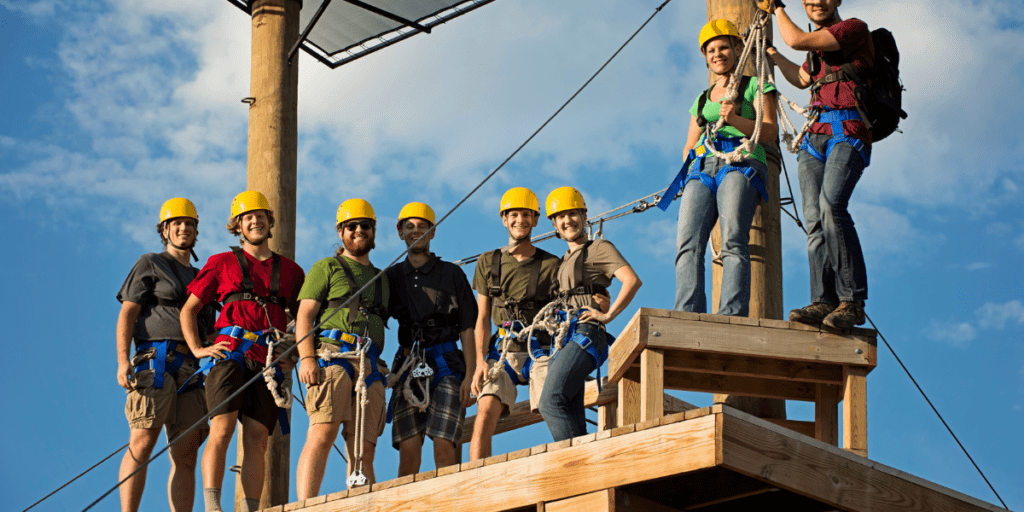
Staff education
Staff training is an essential component of an adventure park’s Safety and Quality Management System (SQMS). Staff training programs are designed to ensure that all employees have the skills and knowledge they need to perform their jobs safely and efficiently. These programs educate employees on park policies and procedures, risk management, emergency response, and safety protocols.
Staff training is critical in an adventure park to ensure that visitors are safe and secure. Staff must be knowledgeable about the park’s facilities, equipment, and activities, as well as be able to respond calmly and efficiently to emergency situations. Regular training sessions should be held at the park to refresh staff on the most recent safety protocols and procedures, as well as to keep them up to date on any changes in equipment or activities.
Aside from safety training, employees should also receive instruction in customer service, communication skills, and conflict resolution. Customer satisfaction and a positive visitor experience are both dependent on good customer service.
In addition, the park should conduct regular performance evaluations of its employees in order to assess their knowledge and understanding of park policies and procedures and to identify areas for improvement. This feedback can be used to improve the staff training program and ensure that all employees are prepared to deal with any situation that may arise.
Finally, staff training is an essential component of an adventure park’s Safety and Quality Management System. It contributes to a positive visitor experience by ensuring that staff have the necessary skills and knowledge to perform their duties safely and efficiently.
Standard operating procedures (SOPs)
Standard Operating Procedures (SOPs) are an important component of an adventure park’s Safety and Quality Management System. SOPs are detailed instructions that outline the steps involved in performing specific tasks or processes, and they play a critical role in ensuring park operations’ safety and quality.
Zip-lining, rock climbing, and ropes courses are common high-thrill activities at adventure parks. These activities can pose potential risks and hazards, so park managers must have a clear and consistent set of procedures in place to ensure that they are carried out safely and effectively.
SOPs should be comprehensive and well-written, and they should be reviewed and updated on a regular basis to reflect changes in equipment, procedures, or regulations. Employees should also have easy access to them, and they should be trained on how to follow the procedures outlined in the SOPs.
SOPs should cover a wide range of tasks and processes, such as the use of safety equipment, proper equipment maintenance, and handling of hazardous materials. They should also include emergency response procedures for situations such as fires, medical emergencies, or natural disasters.
To ensure that the SOPs are effective, audits and evaluations should be conducted on a regular basis to identify any areas where the procedures may be lacking or ineffective. Park managers can make any necessary updates or changes to the SOPs based on the results of these evaluations.
SOPs can provide a competitive advantage for adventure parks in addition to ensuring the safety and quality of park operations. Parks can demonstrate to visitors and stakeholders that they are committed to safety and quality by having a clear and consistent set of procedures in place, as well as their expertise and professionalism.
Finally, Standard Operating Procedures are an essential component of an adventure park’s Safety and Quality Management System. Park managers can ensure the safety and quality of park operations by having comprehensive and regularly updated SOPs in place, as well as demonstrate their commitment to safety and quality to visitors and stakeholders. Audits and evaluations of the SOPs on a regular basis help to ensure that the procedures are effective and up to date, and that the park is prepared to respond effectively to any type of emergency situation.
Plan of action in the event of an emergency
An emergency response plan (ERP) is a critical component of an adventure park’s safety and quality management system. A well-designed ERP can help to ensure the safety of visitors, employees, and the environment in the event of an emergency, as well as minimize damage to equipment and facilities.
Zip-lining, rock climbing, and ropes courses are common high-thrill activities at adventure parks. These activities can pose risks and hazards, so park managers must have a plan in place to respond effectively in the event of an emergency.
An ERP should designate specific individuals who will be in charge of responding to emergencies and coordinating the response effort. These people should be trained in emergency response procedures and have access to the necessary equipment and supplies. The ERP should also include detailed procedures for dealing with various types of emergencies, such as fires, medical emergencies, and natural disasters.
An ERP should include a communication plan in addition to emergency response procedures to ensure that emergency information is effectively communicated to employees, visitors, and relevant stakeholders. This could include using loud speakers, emergency text messaging, or other communication devices.
In addition, the ERP should include detailed evacuation procedures to ensure that visitors and employees can safely evacuate the park in the event of an emergency. These procedures should be well communicated and easily accessible to visitors, and employees should be trained to carry them out.
It is critical to conduct emergency response drills on a regular basis to ensure the ERP’s effectiveness. These drills allow for the testing and refinement of the ERP, as well as ensuring that employees are prepared to respond effectively in the event of an emergency.
Finally, an Emergency Response Plan is a critical component of an adventure park’s safety and quality management system. Park managers can ensure the safety of visitors, employees, and the environment, as well as minimize damage to equipment and facilities, by implementing a well-designed ERP. Regular emergency response drills and ERP updates help to ensure that the park is ready to respond to any type of emergency situation.
Risk evaluations
Risk assessments are critical in ensuring the safety and quality of an adventure park’s operations. These assessments assist park managers in identifying and evaluating potential hazards and risks, as well as implementing measures to mitigate their impact on visitors, employees, and the environment.
Zip-lining, rock climbing, and ropes courses are common high-thrill activities at adventure parks. While these activities can be exciting and fun, they can also pose risks to participants and staff. A thorough risk assessment process is required to ensure that these risks are identified, evaluated, and effectively managed.
The identification of potential hazards and risks is the first step in the risk assessment process. Everything from weather conditions and equipment malfunctions to human error and participant behavior is considered. After identifying the risks, park managers assess the likelihood and potential impact of each risk. This aids in risk prioritization and determining which risks require the most attention and resources.
Once the risks have been assessed, park managers can put in place measures to mitigate their impact. This could include installing safety equipment, training employees, and developing emergency response plans. Furthermore, park managers should monitor the effectiveness of these risk-control measures on a regular basis and make any necessary updates or changes.
Regular employee training is an essential component of a risk assessment process. Employees should be trained in emergency response procedures, as well as how to use safety equipment and first-aid techniques. Adventure parks can ensure that their employees are prepared to respond effectively in the event of an emergency by providing regular training and updating them on changes in risk control measures.
Finally, risk assessments are critical in ensuring the safety and quality of operations at an adventure park. Park managers can identify potential risks, implement mitigation measures, and provide a safe and enjoyable experience for visitors by conducting risk assessments on a regular basis. Adventure parks that prioritize safety and quality through risk assessments are more likely to keep visitors and employees trusting and loyal, as well as to reduce the risk of accidents and incidents.
Keeping Records
Record keeping is an essential component of an adventure park’s Safety and Quality Management System. Proper record keeping aids in the safety and quality of park operations, and it is a necessary tool for tracking park performance and identifying areas for improvement.
Zip-lining, rock climbing, and ropes courses are common high-thrill activities at adventure parks. These activities can pose potential risks and hazards, so park managers must keep detailed records of these activities and the equipment used in them.
Records should be complete and accurate, with information on equipment maintenance and inspections, employee training, and incident reports included. Records should also be easily accessible and retrievable, as well as securely stored to ensure confidentiality and data security.
Audits of the record keeping system on a regular basis can help to ensure that the records are complete and accurate, and that the park is in compliance with all relevant regulations and standards. Based on the results of these audits, park managers can update or improve the record keeping system as needed.
In addition to ensuring the safety and quality of park operations, record keeping can provide adventure parks with a competitive advantage. Parks can demonstrate to visitors and stakeholders that they are committed to safety and quality, as well as being professional and well-managed, by implementing a comprehensive and accurate record keeping system.
Finally, record keeping is an essential component of an adventure park’s Safety and Quality Management System. Proper record keeping aids in the safety and quality of park operations, and it serves as a useful tool for tracking park performance and identifying areas for improvement. Audits of the record keeping system on a regular basis help to ensure that records are complete and accurate, and that the park complies with all relevant regulations and standards.
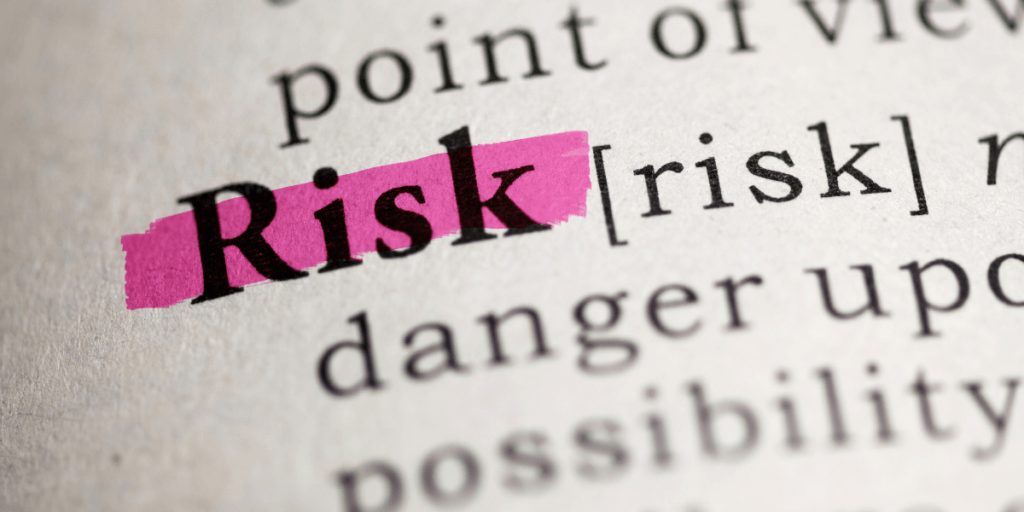
Advantages of a Quality and Safety Management System
Adventure parks are exciting and thrilling places to visit, but they also pose potential risks and hazards. A Safety and Quality Management System (SQMS) can assist adventure parks in mitigating these risks and ensuring the safety and quality of their operations.
Here are some of the advantages of an adventure park SQMS:
- Increased safety: A SQMS assists in the identification of potential risks and hazards associated with adventure park activities such as zip-lining, rock climbing, and ropes courses. This data can then be used to implement controls and reduce risks, resulting in a safer working environment for employees and a lower risk of accidents and incidents.
- Improved quality: A SQMS helps to ensure that adventure park activities are performed consistently and reliably, resulting in a better customer experience. The SQMS can also aid in the proper maintenance of equipment, lowering the risk of equipment failure.
- Improved efficiency: A SQMS provides a structured approach to managing operations, which can aid in the improvement of processes and the reduction of waste. This results in increased efficiency and lower costs.
- Improved compliance: A SQMS assists adventure parks in adhering to relevant regulations, standards, and laws, lowering the risk of legal penalties and maintaining a positive reputation.
- Increased customer satisfaction: A SQMS ensures that customers receive consistent service and a high-quality experience. As a result, customer satisfaction and loyalty increase.
- Increased employee morale: A SQMS contributes to the creation of a safe and positive work environment, which can boost employee morale and reduce turnover.
- Improved decision-making: A SQMS provides a wealth of data and information for making informed decisions. This results in better decision-making and outcomes.
Finally, a Safety and Quality Management System is an important tool for adventure parks. Adventure parks can improve safety, quality, efficiency, compliance with regulations, customer satisfaction, employee morale, and decision-making by implementing a SQMS. A SQMS has numerous advantages, and adventure parks that implement one are likely to see improvements in many areas of their operations.
In order to ensure that visitors have a safe and enjoyable experience, an adventure park must implement a safety and quality management system. Adventure parks can demonstrate their commitment to safety and quality by conducting regular equipment inspections, providing staff training, and having an emergency response plan in place. Adventure parks that implement a safety and quality management system benefit from increased customer satisfaction, increased profitability, and a positive reputation.
What Norms govern Adventure Parks?
Quality management is an important aspect of any adventure park’s operations because it helps to ensure customer safety and satisfaction, as well as the park’s efficiency and profitability. To achieve these objectives, adventure parks must follow a number of quality management norms and standards.
The ISO 9001 standard is one of the most widely accepted quality management standards. This standard provides a framework for developing and implementing a quality management system (QMS), and it covers a wide range of topics such as customer focus, leadership, risk management, and continuous improvement.
Aside from the ISO 9001 standard, there are a number of other regulations that apply to adventure parks, such as those concerning safety and environmental management. For example, the EN 15567 standard, which covers a wide range of topics related to safety, quality, and sustainability, provides guidelines for the design, construction, maintenance, and operation of adventure parks.
The ASTM International standard, which provides guidelines for a wide range of industries, including adventure parks, is another standard that applies to adventure parks. This standard helps to ensure that adventure parks adhere to the most recent industry standards and promotes the quality and safety of park experiences.
To ensure compliance with these norms and standards, adventure parks must implement a QMS that includes a variety of quality management processes and procedures. To help ensure a consistent level of quality and safety, these processes and procedures must be reviewed and updated on a regular basis, and they must be communicated to all employees as well as customers.
Norms and standards, in general, play an important role in the quality management of adventure parks. By following these norms and standards, adventure parks can help to ensure customer safety and satisfaction while also increasing the efficiency and profitability of their operations.
A variety of norms and standards apply to adventure parks, including both national and international norms. The following are some of the most commonly used norms for adventure parks:
- EN 15567: This is a European standard that specifies the design, construction, maintenance, and operation of amusement parks.
- ASTM International: This is a global organization that creates and publishes technical standards for a variety of industries, including amusement parks.
- ISO 9001: This is a quality management system standard that provides guidelines for the process management of an organization.
- OSHA: The Occupational Safety and Health Administration is a federal agency in the United States that is in charge of developing and enforcing workplace safety and health regulations.
- Local and national building codes: Building codes govern the design, construction, and safety of adventure parks’ facilities.
- Safety regulations at the local and national levels: Adventure parks are subject to safety regulations that govern the operation of their facilities as well as the protection of employees and customers.
It is critical for adventure parks to understand the norms and standards that apply to their operations and to ensure compliance with these norms and standards. Following these norms and standards can help adventure parks ensure the safety of their employees and customers while also promoting the quality of their operations.
Gearing Up for Success: Expert Insights on the Adventure Business
The adventure business is booming, offering thrilling experiences and fostering a love for the outdoors. But navigating this exciting industry requires knowledge and expertise. To delve deeper and gain valuable insights from seasoned professionals, explore our additional resources below…
- How to startup a Successful Zip Line Business
- Implementing a Safety and Quality Management System
- ROI at Climbing Walls and Family Entertainment Centers
- Using Technology to Make Your Climbing Gym Accessible and Inclusive
- The Secret to Better Resource Management and Customer Satisfaction
- Every modern climbing gym should have these 5 features
- Considerations when designing ropes courses and adventure parks
- Leading the Way in profitable and safe climbing
- Increase Revenue and Customer Satisfaction for Family Entertainment Centers
- Creating Value for Customers by Using an Auto Belay
- Adventure parks’ logistics essential to customer satisfaction, TO, and ROI.
- Drive Revenue and Customer Satisfaction with Auto Belays
- Considering operating and investing in a zipline?
- Competitive Advantage of an Auto Belay
- Why using Auto Belays Boosts your Business
- ROI at Climbing Walls and Family Entertainment Centers
- Everything You Need to Know about Buying Auto Belays
-
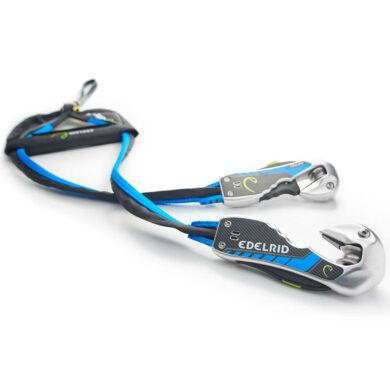 Edelrid Smart Belay X | Magnetic Locking Mechanism€ 420,00 – € 485,00 Ex VAT
Edelrid Smart Belay X | Magnetic Locking Mechanism€ 420,00 – € 485,00 Ex VAT -
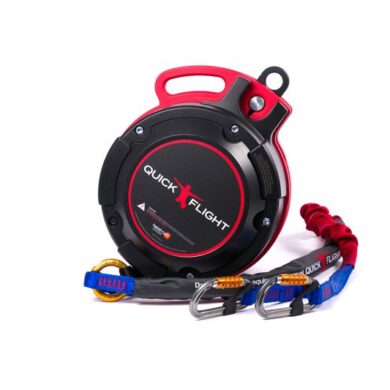 QuickFlight Free Fall Device | 6 – 15,3 meter€ 4.249,00 – € 4.549,00 Ex VAT
QuickFlight Free Fall Device | 6 – 15,3 meter€ 4.249,00 – € 4.549,00 Ex VAT -
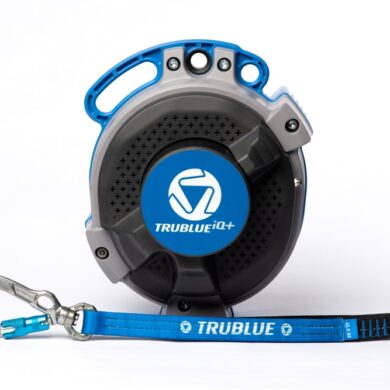 TRUBLUE iQ Auto Belay | 4,5 – 20 meter€ 2.799,00 – € 2.999,00 Ex VAT
TRUBLUE iQ Auto Belay | 4,5 – 20 meter€ 2.799,00 – € 2.999,00 Ex VAT







